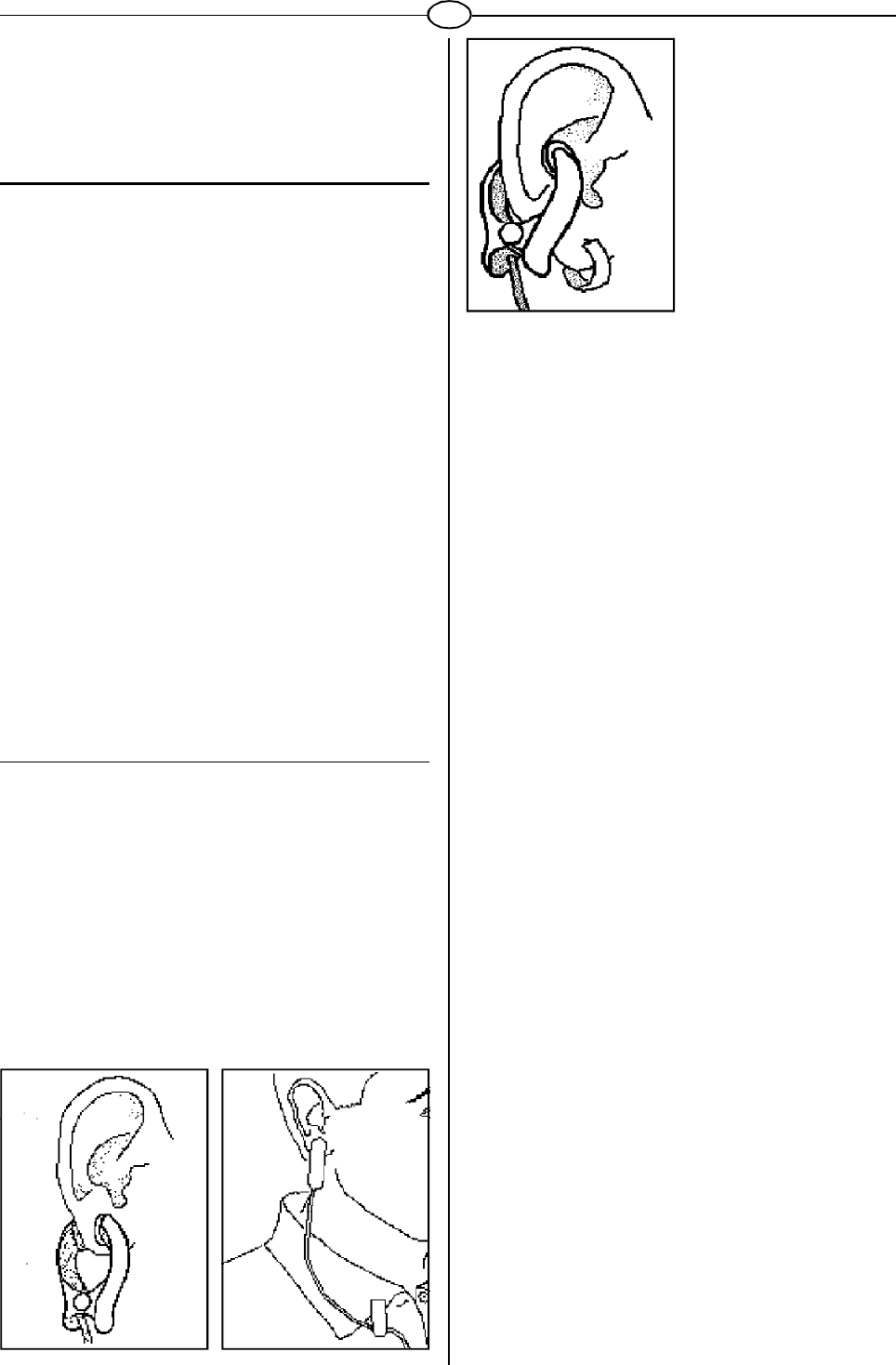
N.B. Protect the meter from direct sunlight, as it may
damage the liquid crystal display. Do not expose the
meter to water or severe impacts, as these may also
damage the meter.
FUNCTIONS
PULSE
Shows pulse frequency per minute (40-240 beats/min). The
heart symbol beside the pulse value flashes in time with the
exerciser’s heartbeat (see MEASURING PULSE).
ENERGY CONSUMPTION
Shows estimated calorie consumption in kilocalories (0-999
kcal) during workout. In theory energy consumption is
calculated from pedalling resistance, speed and distance
pedalled, but because different people’s capacity to produce
energy (efficiency) varies, the energy consumption display
shows only an approximation of the real consumption. This
meter calculates the energy consumption on the basis of
average values.
TIME
Shows time counted upwards in minutes and seconds
(0:00-99:59).
SPEED
Shows the speed you are pedalling at in km per hour (0.00-
99.9 km/h).
DISTANCE
Shows distance in km cumulatively (0.00-99.9 km).
MEASURING PULSE
Measure the pulse as follows:
1. Fit the ear sensor wire plug into the connecting point
on the bottom of the meter.
2. Attach the ear sensor to the earlobe where pulse is
to be measured.
3. Attach the sensor wire e.g. to the collar with the
clip provided. This will prevent moving of the
sensor and insure a more accurate reading of the
pulse. Make sure also that the wire between the
earlobe and the clip is not too long or short so that
the sensor will stay firmly in place.
4
GB
N.B. The shape of the ear
sensor designed by TUNTU-
RI makes it possible also to
measure pulse on inside
surface of the ear if, for
example, circulation is poor
in the earlobe, the earlobe is
too small or cartilaginous as
a result of piercing.
4. The heart symbol beside the pulse value flashes in
time with the user’s heartbeat.
Exercise within different pulse ranges affects the body in
different ways. For example, exercise of long duration within
a pulse range that is about 50-60 % of the maximum pulse
helps you to lose weight, whereas exercise in a range that
is about 70-80 % of the maximum develops the heart and
respiratory system and overall endurance, i.e. improves
your condition.
If you don't know your maximum pulse rate, you can use the
following formulae as a guideline:
WOMEN: 226 - AGE, MEN: 220 - AGE
However, it is advisable to make sure by consulting your
doctor.
For example, to lose weight, a 50-year-old man should
exercise at a resistance and pedalling speed that raise his
pulse to about 85-105 beats/min.
NOTE WHEN MEASURING YOUR PULSE
If the sensor does not immediately start measuring your
pulse, or if the earlobe is cold, rub the earlobe with the
fingers to speed up circulation. Physiological differences
between different people may also cause disturbances in
pulse measurement. In these cases, try measuring on the
inside surface of the ear or on the tip of your finger.
If measuring disturbances appear while pedalling, test the
functioning of the sensor while stationary. Strong,
unintentional swaying while pedalling may also disturb
measurement. If pulse values rise above 150 beats/min.,
earlobe measurement may be affected by the speeding up
of circulation.
Sometimes a strong light source, e.g. a fluorescent tube, in
the immediate vicinity of the user may cause disturbances
in pulse measurement. In this case, test the functioning of
the sensor by turning the ear sensor the other way
round on the earlobe. Pulse reading can also be affected,
if the battery power of the meter is too low.
Remember to clean the ear sensor. Clean the ear sensor
after use, for example, with mild soapy water. Do not use
solvents.
More reliable pulse measurement is achieved with a telemetric
device, in which the electrodes of the transmitter fastened
to the chest transmit the pulses from the heart to the meter
by means of an electromagnetic field.










